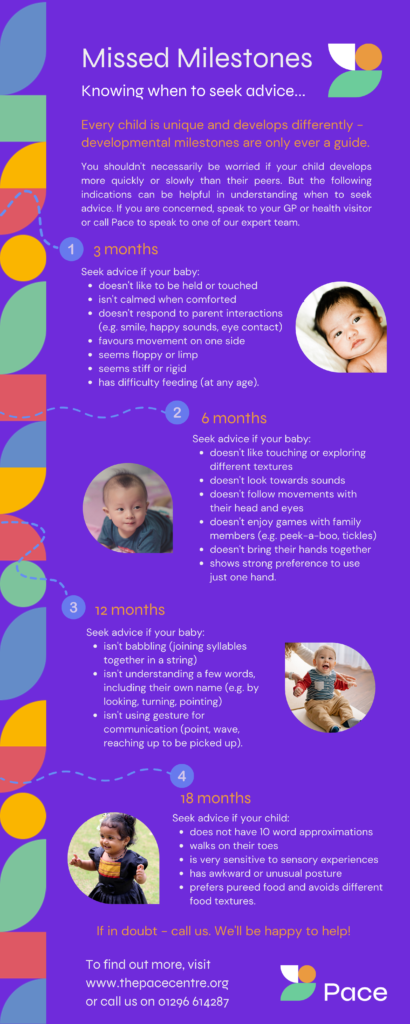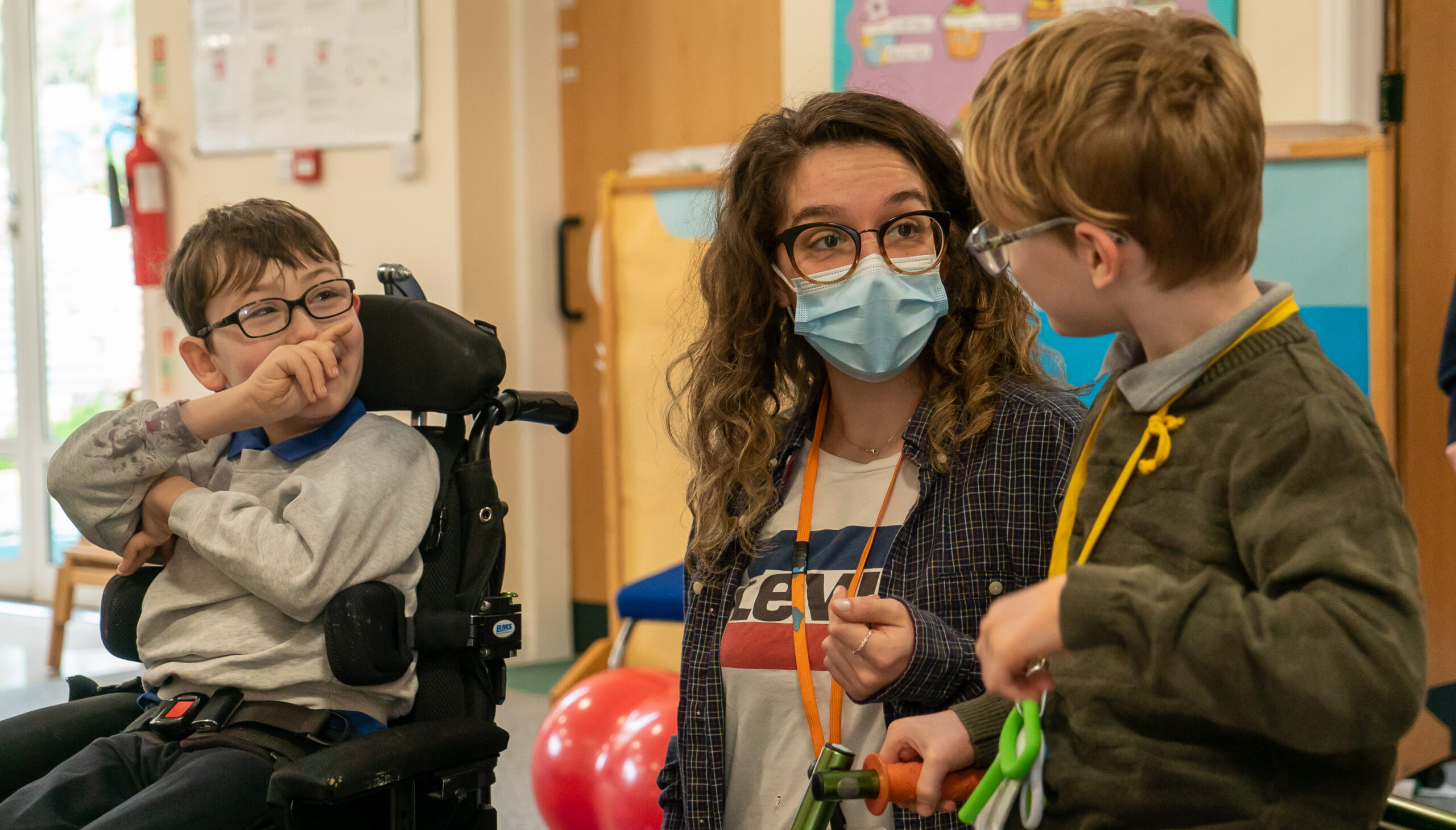Cerebral palsy
What is cerebral palsy?
Cerebral palsy is an umbrella term for a type of physical disability caused by damage to the brain which occurs before, during, or immediately after, the birth of a child.
Cerebral palsy affects a person’s ability to move and maintain their balance and posture. It’s the most common motor disability in childhood and is a lifelong condition.
Cerebral palsy affects around 1 in 400 children in the UK – so around 1,800 children are diagnosed every year. The symptoms vary from person to person. Someone with severe cerebral palsy may need a lifetime of specialist care and equipment. Someone with mild cerebral palsy may not need any special help.

What you might see
If your baby or toddler is not meeting developmental milestones, you should talk to your GP or health visitor. Signs that may suggest cerebral palsy include:
By three months
- Your baby does not kick their legs
- Your baby’s arms and legs seems stiff or rigid
- Your baby’s movements seem floppy or limp
- Your baby has difficulty controlling movements
- Your baby does not move their eyes to follow you
- Your baby favours movement on one side of the body
- Baby is not smiling
By six months
- Your baby does not bring their hands to their mouth
- Your baby is not starting to roll or reach for objects
By eight months
- Your baby is not sitting
By 18 months
- Your child is not walking
- Your child seems to miss sensory cues
- Your child is very sensitive to sensory experiences
- Your child doesn’t seem familiar with people or things
- Your child has awkward or unusual body postures
- Your child walks on their toes
Getting a cerebral palsy diagnosis
If your child is diagnosed with cerebral palsy, they will have one of four types: ataxic, spastic, dyskinetic and mixed. The different types depend on which area of the brain has been damaged.
Immediately, you might feel shocked, sad, worried or scared. Many people have not heard of cerebral palsy before, and have lots of questions.
Let’s be clear: you are not alone. The situation which you and your child now face is not new to us here at Pace. We understand, and we can help.
Your child has a future. He or she has unique potential. You can help them face their challenges head-on. And we can help you with clinical and specialist educational support, all rooted in our unique Pace approach.
Four types of cerebral palsy
Ataxic cerebral palsy
This is caused by a brain injury to the cerebellum – our motor control centre – and affects movement, balance and coordination. Ataxic cerebral palsy affects the hands, arms, legs, feet, eyes and speech. Children may be shaky and struggle with precise movements like bringing their hands together. They may have an unsteady walking pattern, and find speech and eye movements challenging.
Spastic cerebral palsy
This is the most common type of cerebral palsy, affecting 80% of people with CP. It causes damage to the motor cortex at the top of the brain, or its pathways. Children might have muscle tightness, stiffness, and reduced or jerky movements. The extent of damage determines what parts of the body are affected:
- Spastic diplegia means muscle stiffness in the legs, primarily, but arm mobility may also be affected.
- Spastic hemiplegia means one whole side of the body is affected. Typically, the arm is more affected than the leg.
- Spastic quadriplegia means the whole body is affected, sometimes including muscles of the head and face.
Dyskinetic cerebral palsy
This is caused by damage to the parts of the brain called the basal ganglia and sometimes the thalamus. Children will have one or more types of involuntary movements:
- Dystonia means repetitive twisting movements and unusual posture, across the whole or part of the body.
- Athetosis is uncontrollable fluctuations in muscle tone (high tone means stiff muscles, low tone means floppy muscles).
- Chorea is unpredictable, irregular dance-like movements.
The movement associated with this type of cerebral palsy makes it difficult for children to maintain a sitting or standing position. They might struggle with sustained activities like holding something, or precision activities like managing food or playing with toys.
Mixed type cerebral palsy
This is a mix of ataxic, spastic and dyskinetic cerebral palsy.
What else do you need to know?

What else do you need to know?
Sensory loss – particularly hearing and vision – is more prevalent in children with cerebral palsy.
Children with cerebral palsy may also have epilepsy, and diagnoses such as Autism Spectrum Disorder (ASD) and Attention Deficit Hyperactivity Disorder (ADHD).
